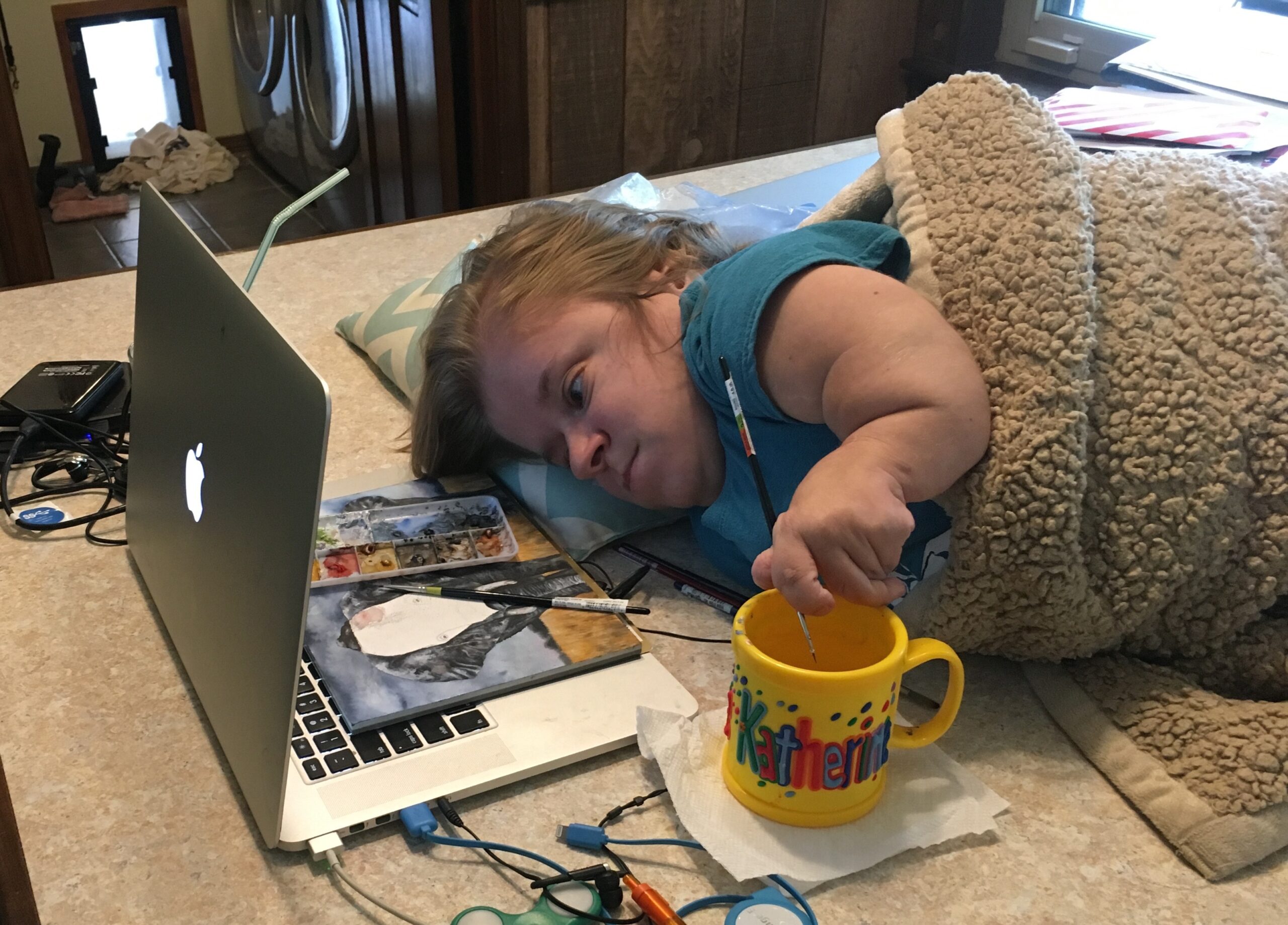As a watercolor artist with Osteogenesis Imperfecta (OI), also known as Brittle Bone Disease, my approach to art is as much about creativity as it is about adaptation. Living with chronic pain and physical limitations means I’ve had to develop unique methods to pursue my passion for painting—especially my watercolor animal art, which is inspired by my love for animals.
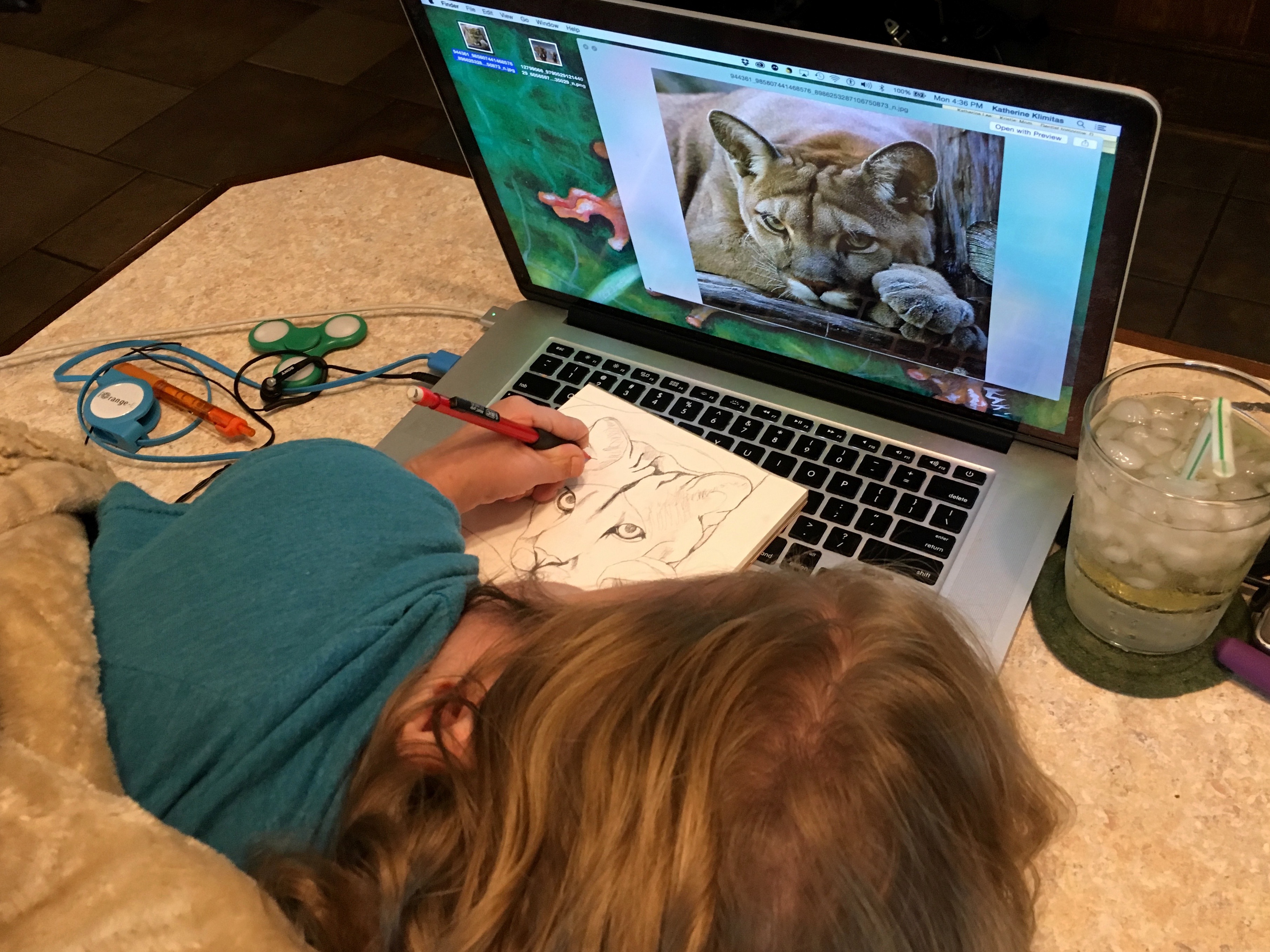
Painting from a Different Perspective
Surprisingly, I paint lying on my right side, stabilizing my left hand on my body. This position minimizes the strain on my joints and back, allowing me to work more comfortably despite the challenges of constant pain. While this setup works best for me, it comes with its own difficulties, particularly in achieving accurate proportions and perspective in my preliminary drawings.
At first, drawing while lying down felt like an impossible task. My perspective skewed everything I worked on, and it wasn’t until I began private lessons with the late Robin Pellegrin that I learned how to compensate. Robin was more than a teacher; she was a problem-solving genius who understood that my unique perspective required a unique approach.
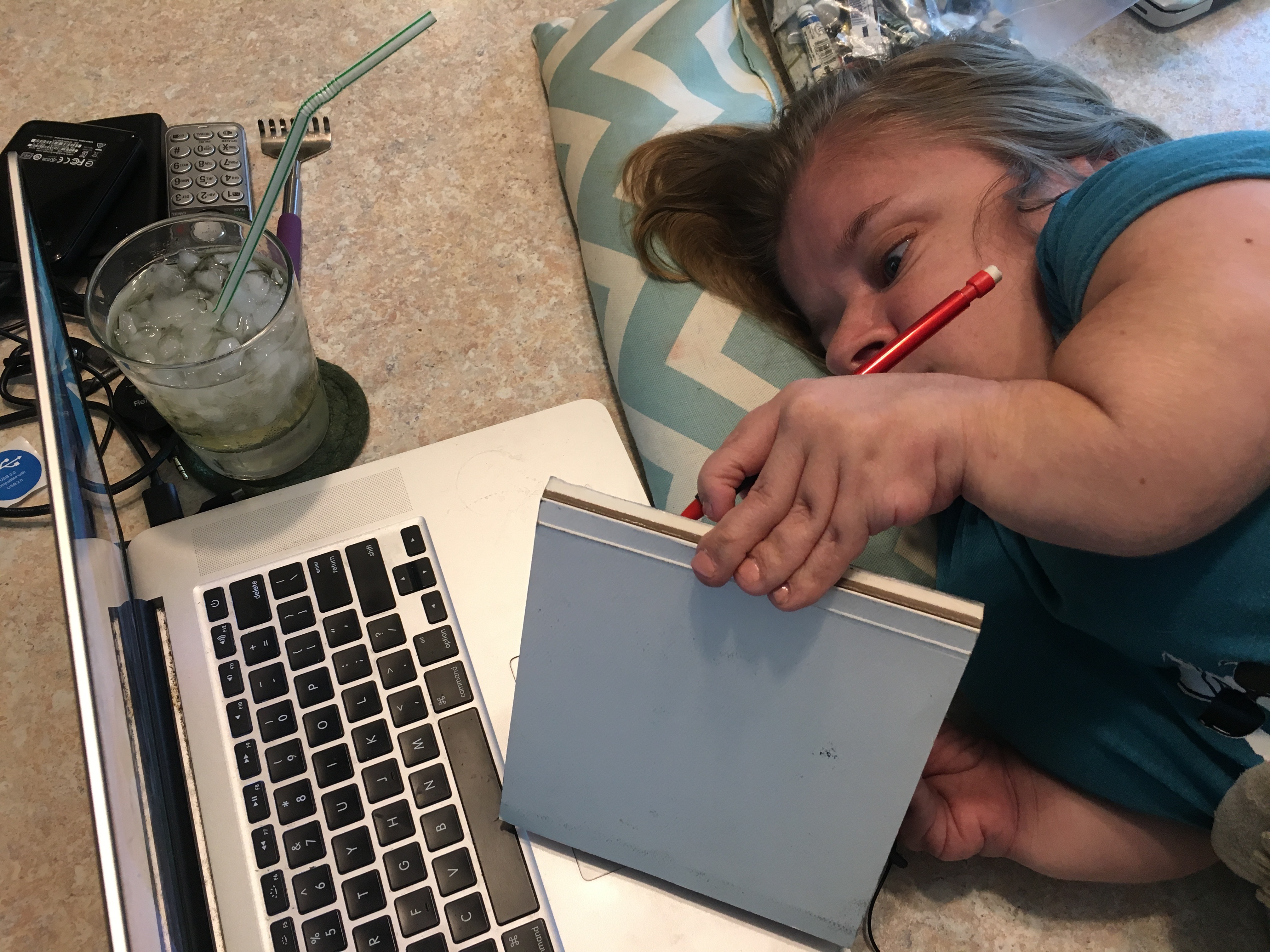
The Mentor Who Changed Everything
Robin’s methods were unconventional but transformative. She would set up a still life, lie on the floor beside me, and demonstrate how to adjust my drawings so they appeared accurate when viewed upright. Her dedication and patience taught me the invaluable skill of compensating for my position, allowing me to develop the technical skills necessary to pursue art professionally.
Under Robin’s guidance, I learned that art isn’t just about creativity—it’s also about problem-solving. One unforgettable day, she made me draw freehand circles for two hours. It was grueling, but by the end of it, I could draw perfect circles of any size—a skill I use to this day.
Discovering My Painting Medium: Watercolor
Although Robin introduced me to various mediums, it wasn’t until after our lessons ended that I discovered my love for watercolor. While some might consider watercolor unforgiving, I find it to be the most adaptable and intuitive medium. Its fluidity mirrors the adaptive nature of my life, allowing me to create delicate, vibrant pieces, often featuring animals.
My connection to animals inspires much of my work as a watercolor animal artist, and I take great pride in capturing their spirit through this medium.
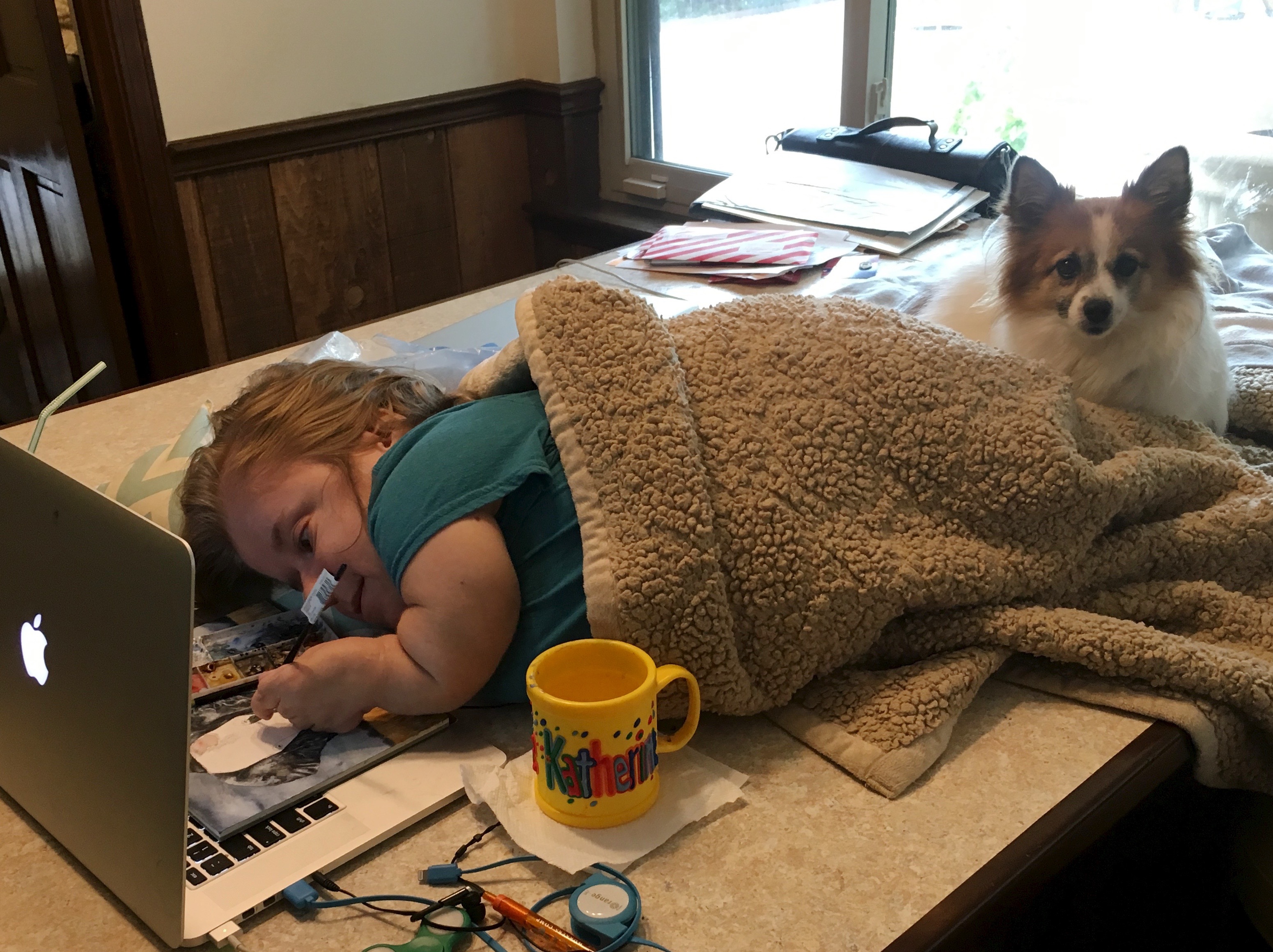
The Role of Adaptation in My Artistic Process
Every artist develops a system, and mine is built around the specific needs of my body. From how I position my paints and water to the environment I create with background music or TV, every detail matters.
I’ve learned the hard way that consistency is key—like placing my water and drink in the same spot every time to avoid rinsing my brush in my drink! These small habits help me stay focused, especially during the 2-5 hour painting sessions I typically set aside.
However, my body dictates my limits. After about five hours of painting, my joints and muscles begin to protest, and I know it’s time to stop.
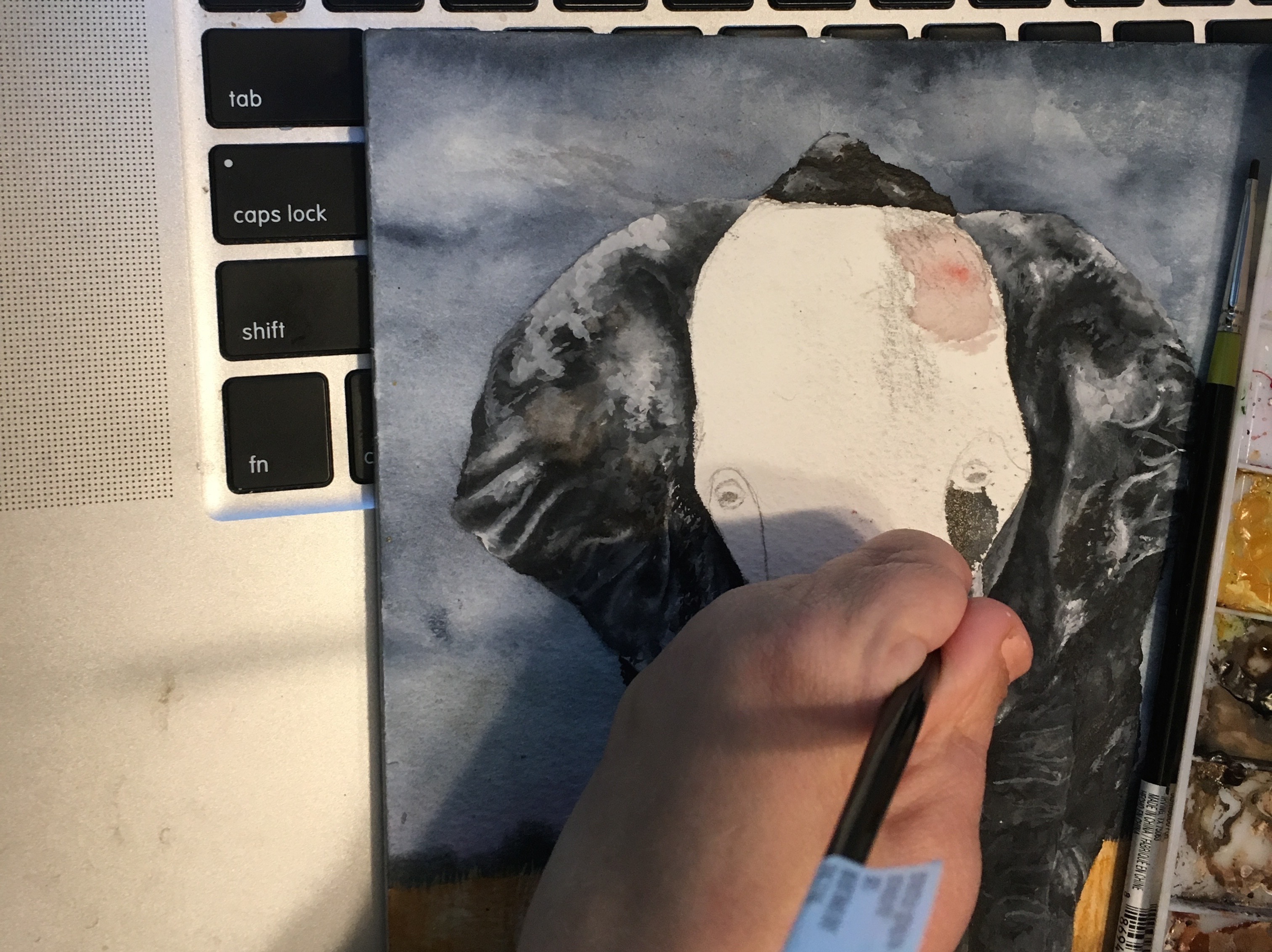
A Legacy of Motivation and Problem-Solving
Robin’s influence lives on in my work and my approach to life as a disabled artist. She taught me that every obstacle is an opportunity to find a solution, whether it’s learning to draw from a skewed perspective or adapting my process to my physical needs.
Her mantra, “A great painting starts with a great drawing,” continues to guide me as I create art that reflects my experiences and passions. Through my journey as an artist living with a disability, I hope to inspire others to find their own ways to adapt, overcome, and thrive.

